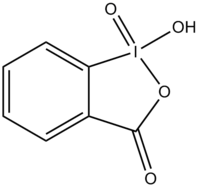
Photo from wikipedia
Abstract Ozone/peroxymonosulfate (O3/PMS), firstly proposed by our group, is an efficient advanced oxidation process for the degradation of organic pollutants. However, the elevation of bromate formation was the main problem… Click to show full abstract
Abstract Ozone/peroxymonosulfate (O3/PMS), firstly proposed by our group, is an efficient advanced oxidation process for the degradation of organic pollutants. However, the elevation of bromate formation was the main problem in the treatment of bromide-containing water. In this work, adding low dosage of powdered activated carbon (PAC), carbon nanotube (CNT) and graphene oxide (GO) in the inhibition of bromate formation and the enhanced degradation of organic pollutants during the O3/PMS process were firstly investigated. As 10 mg/L of PAC, CNT and GO were added, the bromate conversion efficiency (25.1%) was decreased to 15.9%, 14.1%, and 8.8% at pH = 7.0, 50 μM PMS addition and 1.135 mg min−1 ozone injection after 25 min reaction. It is shown that the carbon materials played a crucial role in reducing intermediate products (HOBr/OBr−) in the reaction, thereby blocked the bromate formation. This may be due to the defects such as vacancies and zigzag/armchair-like edges on the graphene boundary, which were reported as active sites for oxygen reduction reaction. Meanwhile, the addition of three carbon materials would also promote the degradation of oxalic acid and para-chlorobenzoic acid, and the effect of GO was better than the other two. According to the release of TOC in the reaction, the stability of GO was obviously stronger than that of PAC and CNT, which was attributed to that GO had a relatively stable lamellar structure. Finally, compared with the deionized water, the water matrices that would trap free radicals in actual water samples can significantly inhibit the bromate formation. Therefore, adding low dosage of carbon materials is an effective way to control the bromate formation and promote the degradation of organic pollutants in the O3/PMS process.
Journal Title: Chemical Engineering Journal
Year Published: 2020
Link to full text (if available)
Share on Social Media: Sign Up to like & get
recommendations!